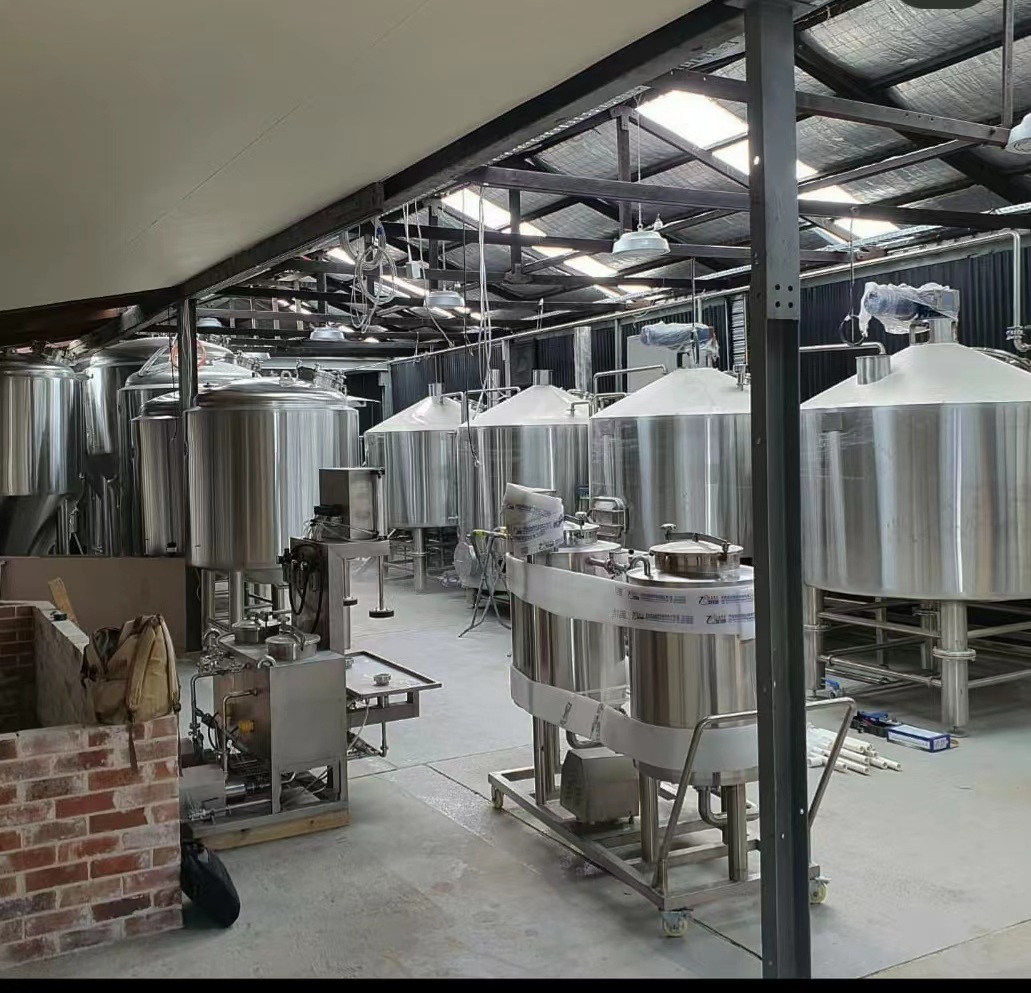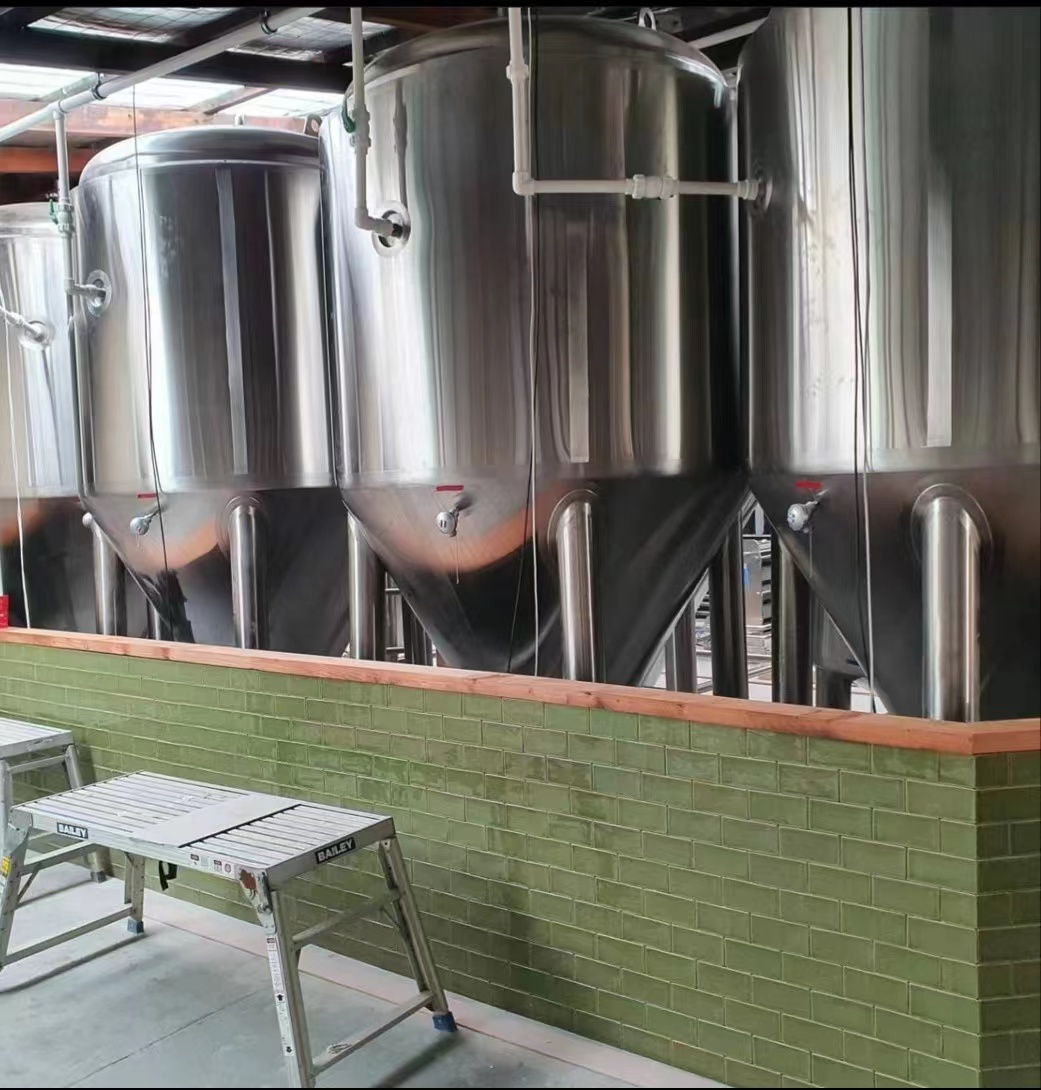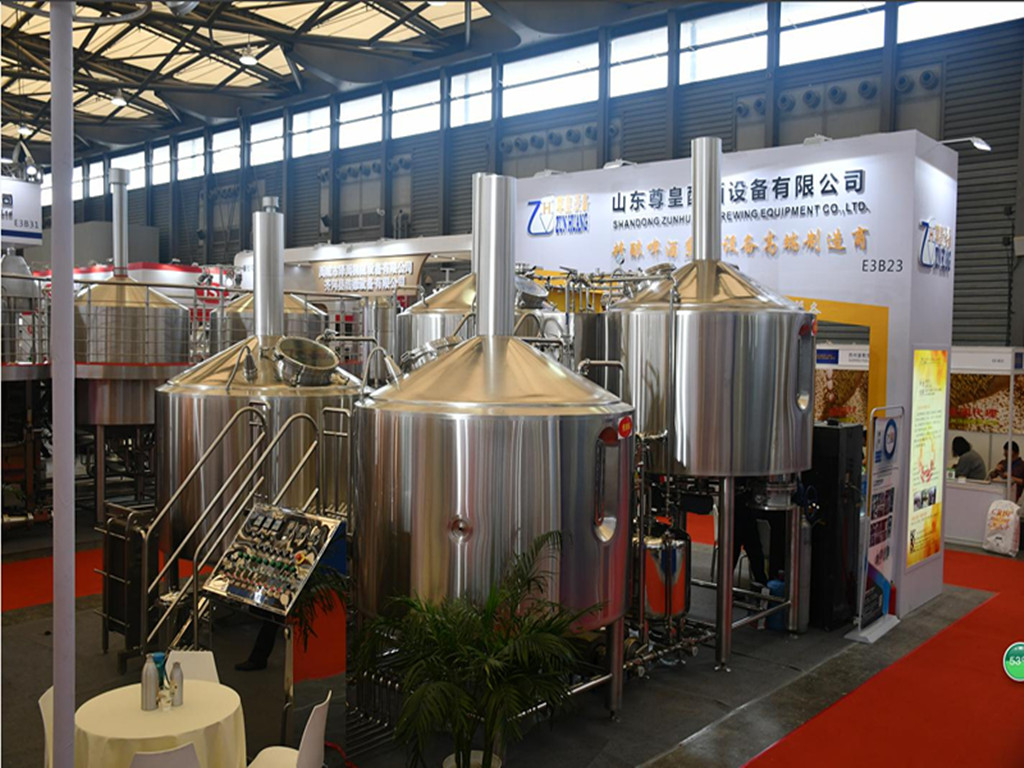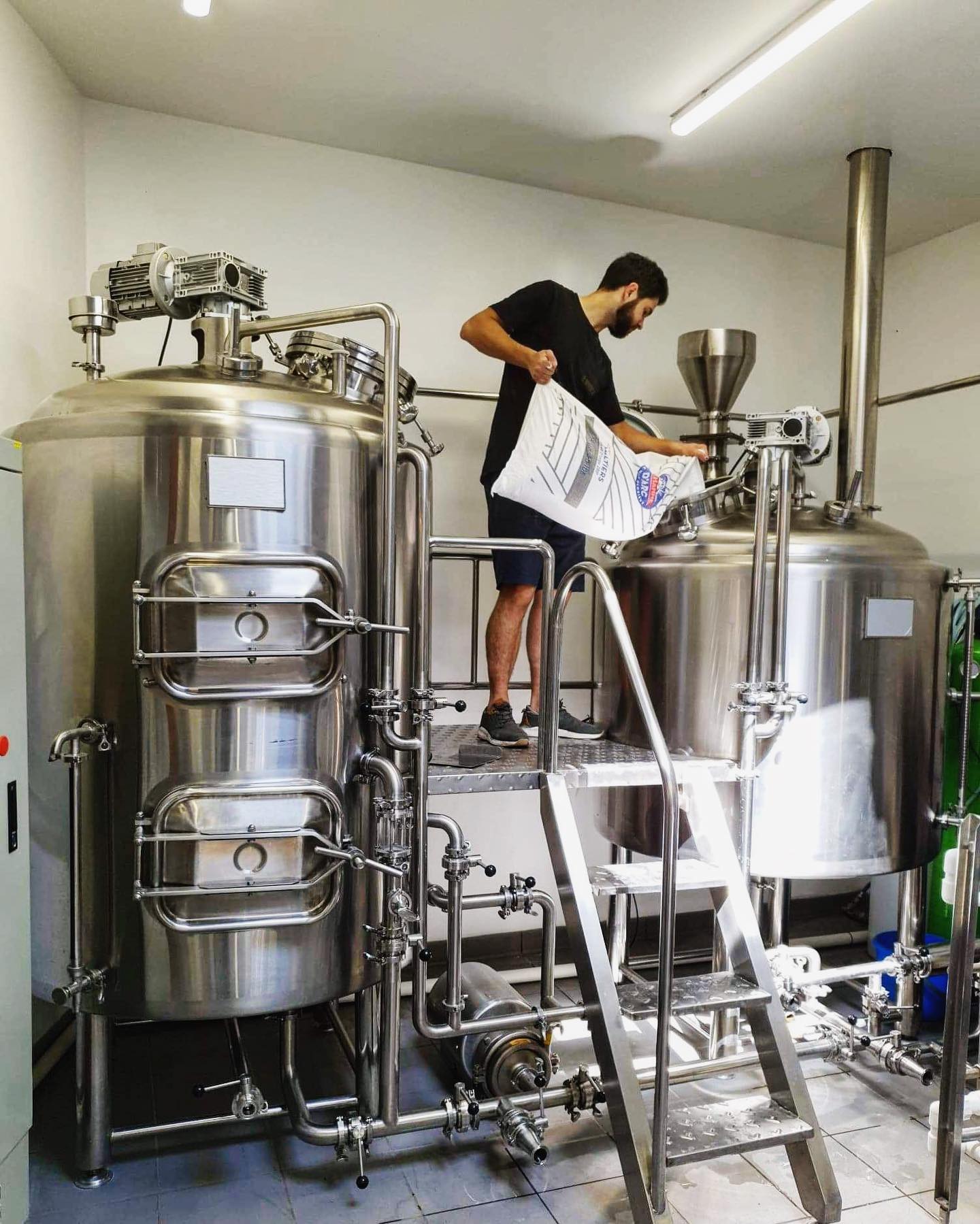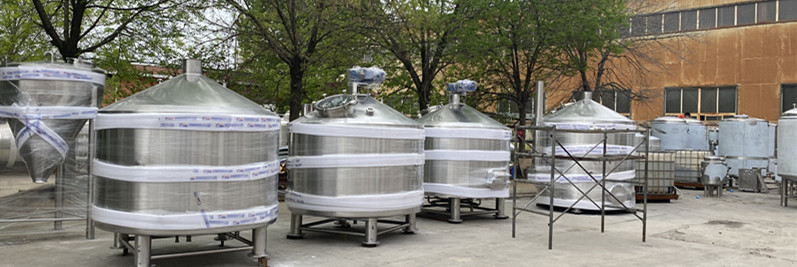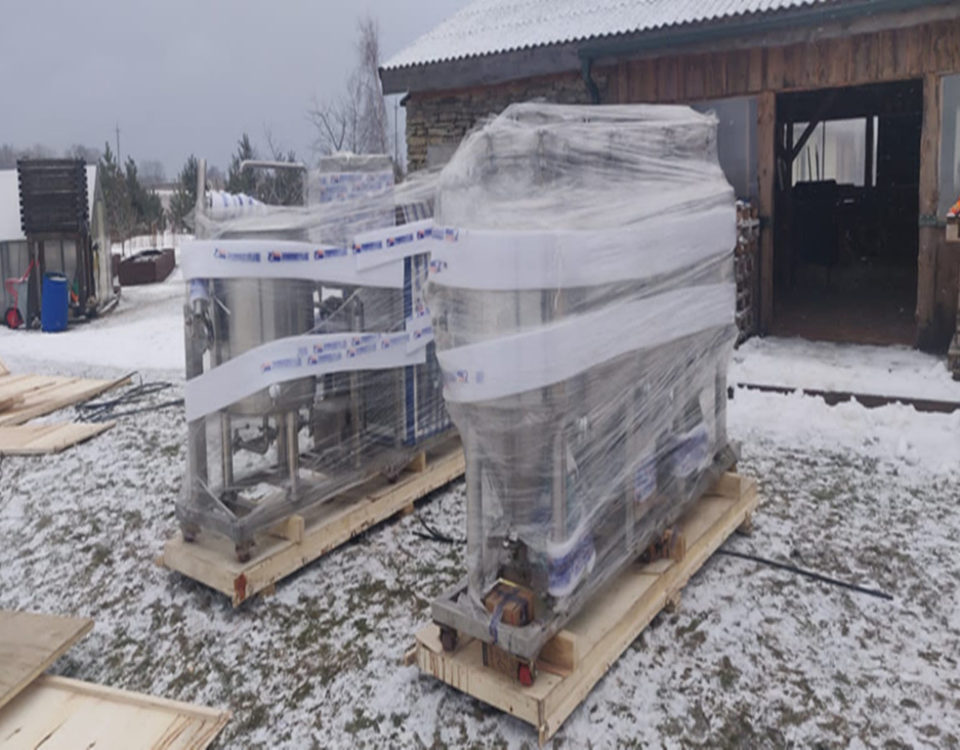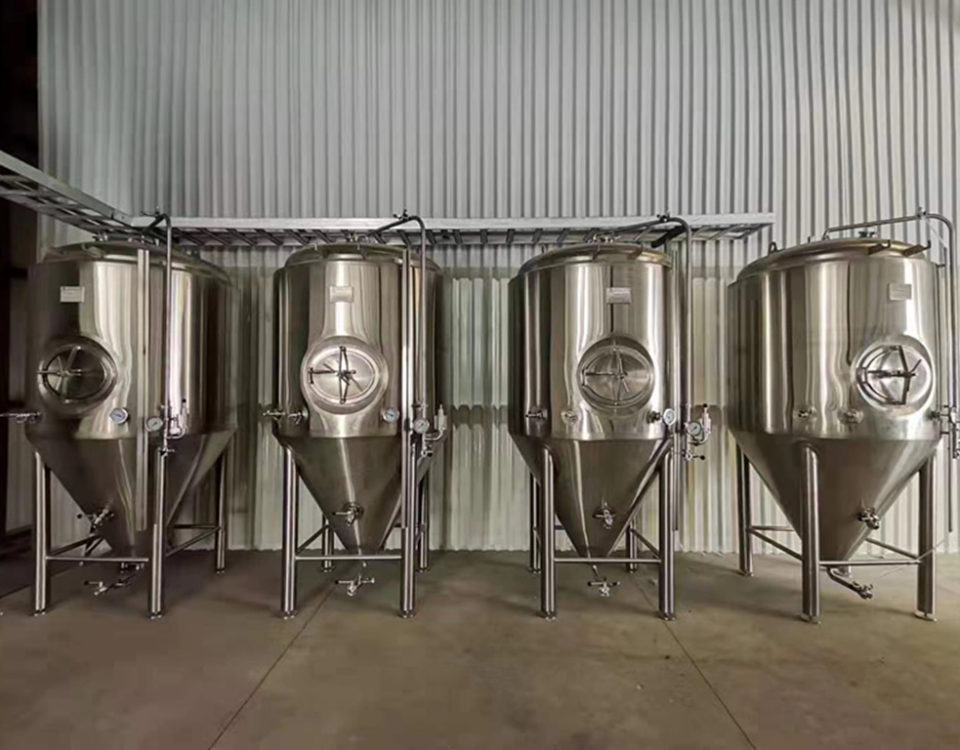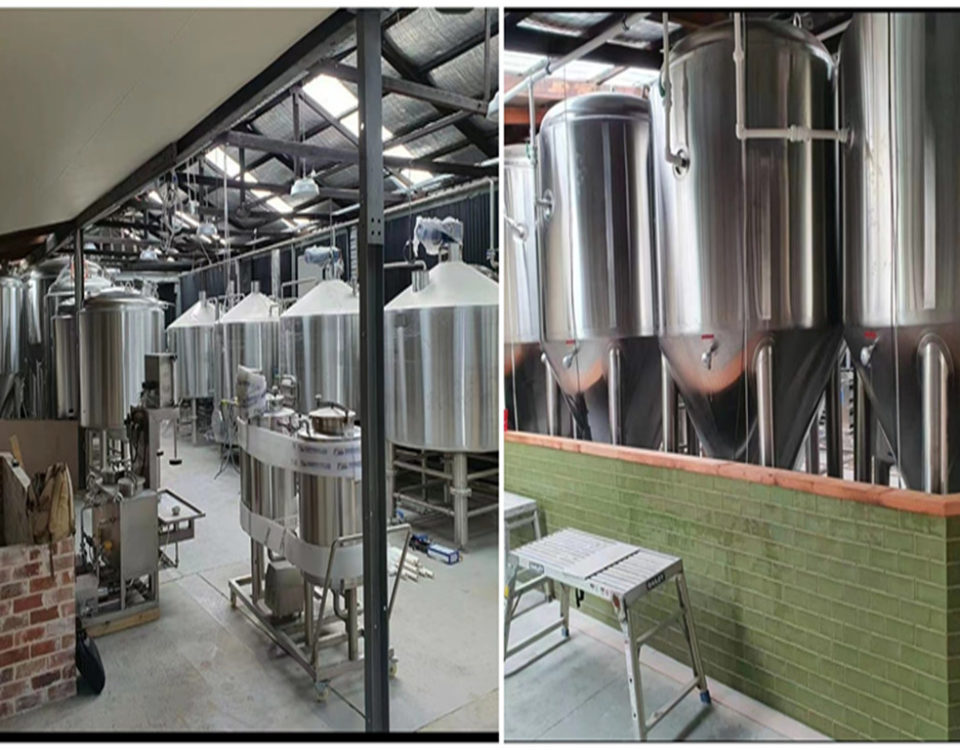
2000 liter beer fermentation tank brewing beer in Mexicali Mexico
02/15/2022
Tips for Running a Mini brewery equipment
02/08/20222000L 4 Vessel Brewhouse beer brewing equipment in Australia, the more thing i want talk with you is abut how choose your beer equipment size. Understanding these questions and being able to answer them is a good first step in your quest to open a brewery. So, I thought why not share, and if you need help answering them, please feel free to reach out.
1. What vessels for the brewhouse?
With the initial questions we discussed how many brewhouse vessels you want. If it’s a 4 vessel brewhouse system, then it’ll be a separate mash mixer, lauter tun, kettle and whirlpool.
For a 3-vessel beer equipment there’s a choice. Whether to choose a combined mash/lauter or combined kettle/whirlpool? Each has their pros and cons:
Combined mash/lauter
Brewers often see quicker brew days with this set up, when back-to-back brewing. Having a separate kettle and whirlpool means you can begin the second lauter as soon as the first brew is in the whirlpool.
Also, you can have a mini heat exchanger between the kettle and the whirlpool. To bring the temperature of the wort down easily for the aroma hop additions. Brewers see better results with aroma hops added to cooler wort in the whirlpool.
Combined kettle/whirlpool
If you want to step mash, having a separate mash mixer means you have a more even homogenous mash temperature. With a combined mash lauter you tend to get temperature stratification.
Furthermore, heating up the mash for mash out is easier. Then you transfer the mash across to the lauter tun. The lauter tun can be the proper dimensions for a thinner bed, better run-off and efficiency too.
It’s personal preference but when using steam for heating, having a separate mash and lauter does make sense.
We lock in brewhouse vessel choice in the follow-up discussions. Even with a 2-vessel system we have choices to make. We can use a “German system” where the two tanks are actually 3.
Option 1 – Three tank for mashing/boiling, lauter and whirlpool
Option 2 – Three tanks for mash/lauter, HLT and kettle/whirlpool
For example, with option 1 the lauter tun is above the whirlpool and so the footprint is for 2-vessels but actually you have three tanks.
The Number of Brewhouse Vessels Required
Let’s go back to the Australia 2000L beer brewing equipment , it is 4 vessel brewhouse as we talked: mash tun, lauter tun, kettle and whirlpool.
Mash mixer – Where your mix hot liquor, malt and any adjuncts to get the brew started.
Lauter tun – Where the wort (sugar liquid) is separated from the solids of the mash and sent to the brew kettle.
Brew kettle – Where the wort is boiled and the hops added.
Whirlpool – Where precipitate solids (from the boil) and hop particles are separated from the hot wort and left behind. As the liquid goes via the heat exchanger to the fermentation vessel.
There are many configurations a brewer can have in their brewhouse. However, here are the most common options:
2-vessels system – A combined mash/lauter tun and combined kettle/whirlpool. Generally used for smaller systems, where space is a premium or you’re on a smaller budget.
3-vessels system – You have two options here, combined mash/lauter with separate kettle and whirlpool or separate mash and lauter and combined kettle/whirlpool. They both have their advantages and disadvantages. I’m happy to discuss them if you’d like to get in contact.
4-vessel system – This is where you generally have a separate mash, lauter, kettle and whirlpool. They can be a square formation or linear.
The advantage of a four-vessel system is you can perform multiple steps at the same time. This increases the number of turns (brews) you can do in one day. So, better for a production brewery.
The auxiliary equipment of brewing equipment is also necessary, please click the link to watch the video.

